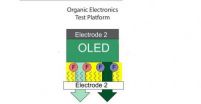Malfunction in molecular 'proofreader' prevents repair of UV-induced DNA damage
2014-04-21
(Press-News.org) PITTSBURGH, April 21, 2014 – Malfunctions in the molecular "proofreading" machinery, which repairs structural errors in DNA caused by ultraviolet (UV) light damage, help explain why people who have the disease xeroderma pigmentosum (XP) are at an extremely high risk for developing skin cancer, according to researchers at the University of Pittsburgh School of Medicine and the University of Pittsburgh Cancer Institute (UPCI). Their findings will be published this week in the early online version of the Proceedings of the National Academy of Sciences.
Previous research has shown that a DNA-repair protein called human UV-damaged DNA-binding protein, or UV-DDB, signals for a repair when two UV-DDB molecules bind to the site of the problem, said senior investigator Bennett Van Houten, Ph.D., the Richard M. Cyert Professor of Molecular Oncology, Pitt School of Medicine, and co-leader of UPCI's Molecular and Cell Biology Program.
"Our new study shows UV-DDB makes stops along the DNA strand and transiently attaches to it, causing a proofreading change in the protein's conformation, or shape. If the DNA is damaged the protein stays, if the DNA is not damaged the protein leaves," Dr. Van Houten said. "When it comes to a spot that has been damaged by UV radiation, two molecules of UV-DDB converge and stay tightly bound to the site, essentially flagging it for the attention of repair machinery."
The researchers followed the trail of single molecules of UV-DDB by tagging them with light-emitting quantum dots, enabling them to watch the molecules jump from place to place in real time on both normal and UV-exposed DNA strands.
They also tracked a mutant UV-DDB protein associated with XP, an inherited, incurable disease of light sensitivity that affects about 1 in 250,000 people. They found that the mutant UV-DDB molecules are still capable of binding to DNA, but continued to slide along the DNA rather than staying put to signal where the fix was needed.
"Without this important damage control, UV-induced errors could accumulate to cause cell alterations that foster cancer development," Dr. Van Houten said. "Like a bus with no brakes, the XP-associated UV-DDB complex stays on the road and sees possible passengers, but keeps going past the stop."
INFORMATION:
Co-investigators include Harshad Ghodke, Ph.D., Ching L. Hsieh, Selamawit Woldemeskel, Simon C. Watkins, Ph.D., and Vesna Rapic-Otrin, Ph.D., all of the University of Pittsburgh School of Medicine; and Hong Wang, Ph.D., of North Carolina State University.
The project was funded by the University of Pittsburgh Cancer Institute Cancer Center Support grant CA 047904 and National Institutes of Health grant ES019566.
About the University of Pittsburgh School of Medicine
As one of the nation's leading academic centers for biomedical research, the University of Pittsburgh School of Medicine integrates advanced technology with basic science across a broad range of disciplines in a continuous quest to harness the power of new knowledge and improve the human condition. Driven mainly by the School of Medicine and its affiliates, Pitt has ranked among the top 10 recipients of funding from the National Institutes of Health since 1998. In rankings recently released by the National Science Foundation, Pitt ranked fifth among all American universities in total federal science and engineering research and development support.
Likewise, the School of Medicine is equally committed to advancing the quality and strength of its medical and graduate education programs, for which it is recognized as an innovative leader, and to training highly skilled, compassionate clinicians and creative scientists well-equipped to engage in world-class research. The School of Medicine is the academic partner of UPMC, which has collaborated with the University to raise the standard of medical excellence in Pittsburgh and to position health care as a driving force behind the region's economy. For more information about the School of Medicine, see http://www.medschool.pitt.edu.
About UPCI
As the only NCI-designated comprehensive cancer center in western Pennsylvania, UPCI is a recognized leader in providing innovative cancer prevention, detection, diagnosis, and treatment; bio-medical research; compassionate patient care and support; and community-based outreach services. Investigators at UPCI, a partner with UPMC CancerCenter, are world-renowned for their work in clinical and basic cancer research.
http://www.upmc.com/media
ELSE PRESS RELEASES FROM THIS DATE:
Penn Medicine researchers uncover hints of a novel mechanism behind general anesthetic action
2014-04-21
(PHILADELPHIA) – Despite decades of common use for surgeries of all kinds, the precise mechanism through which general anesthesia works on the body remains a mystery. This may come as a surprise to the millions of Americans who receive inhaled general anesthesia each year. New research led by the Perelman School of Medicine at the University of Pennsylvania investigated the common anesthetic sevoflurane and found that it binds at multiple key cell membrane protein locations that may contribute to the induction of the anesthetic response. Their findings will appear online ...
Earth Week: Bark beetles change Rocky Mountain stream flows, affect water quality
2014-04-21
On Earth Week--and in fact, every week now--trees in mountains across the western United States are dying, thanks to an infestation of bark beetles that reproduce in the trees' inner bark.
Some species of the beetles, such as the mountain pine beetle, attack and kill live trees. Others live in dead, weakened or dying hosts.
In Colorado alone, the mountain pine beetle has caused the deaths of more than 3.4 million acres of pine trees.
What effect do all these dead trees have on stream flow and water quality? Plenty, according to new research findings reported this ...
Krypton-dating technique allows researchers to accurately date ancient Antarctic ice
2014-04-21
A team of scientists, funded by the National Science Foundation (NSF), has successfully used a new technique to confirm the age of a 120,000-year-old sample of Antarctic ice.
The new dating system is expected to allow scientists to identify ice that is much older, thereby reconstructing climate much farther back into Earth's history and potentially leading to an understanding of the mechanisms that cause the planet to shift into and out of ice ages.
The use of a radiometric-Krypton-dating technique on ice from Antarctica's Taylor Glacier was documented in a paper published ...
Progress made in developing nanoscale electronics
2014-04-21
Scientists are facing a number of barriers as they try to develop circuits that are microscopic in size, including how to reliably control the current that flows through a circuit that is the width of a single molecule.
Alexander Shestopalov, an assistant professor of chemical engineering at the University of Rochester, has done just that, thereby taking us one step closer to nanoscale circuitry.
"Until now, scientists have been unable to reliably direct a charge from one molecule to another," said Shestopalov. "But that's exactly what we need to do when working with ...
A gene within a gene contributes to the aggressiveness of acute myeloid leukemia
2014-04-21
COLUMBUS, Ohio – A small gene that is embedded in a larger, well-known gene is the true leukemia-promoting force usually attributed to the larger gene, according to a new study by researchers at The Ohio State University Comprehensive Cancer Center – Arthur G. James Cancer Hospital and Richard J. Solove Research Institute (OSUCCC – James).
The findings are published in the journal Science Signaling.
The larger host gene is called BAALC (pronounced "Ball C"). The smaller embedded gene is called microRNA-3151 (miR-3151). The study investigated the degree to which each ...
Simulating in tiny steps gave birth to long-sought-after method
2014-04-21
Using computer simulations to predict which drug candidates offer the greatest potential has thus far not been very reliable, because both small drug-like molecules and the amino acids of proteins vary so much in their chemistry. Uppsala researchers have now cunningly managed to develop a method that has proven to be precise, reliable and general.
The largest class of human target proteins for drugs are the so-called G-protein-coupled receptors. They are targets for about 40 per cent of all drugs on the market. These receptors are found in the cell membrane and handle ...
Lack of breeding threatens blue-footed boobies' survival
2014-04-21
Blue-footed Boobies are on the decline in the Galápagos.
A new study appearing in the journal Avian Conservation and Ecology indicates numbers of the iconic birds, known for their bright blue feet and propensity to burst into dance to attract mates, have fallen more than 50 percent in less than 20 years.
The drastic drop in population is probably due to an unexplained disappearance of sardines from the Boobies' diet, said Dave Anderson, a professor of biology at Wake Forest University and the study's principal investigator. This in turn has adult Boobies electing not ...
NASA sees wind shear affecting newborn Tropical Cyclone Jack
2014-04-21
Tropical Cyclone Jack may have hurricane-force winds today, April 21, but strong vertical wind shear is expected to weaken the storm. NASA's TRMM satellite passed overhead and saw that the bulk of the storm's rainfall was being pushed south of the center from the wind shear.
Tropical Cyclone Jack formed on Sunday, April 20, near 13.4 south and 91.1 east, and began moving to the south at 6 knots/6.9 mph/11.1 kph. Jack strengthened quickly and hours after its birth, the storm already had maximum sustained winds near 55 knots/63.2 mph/101.9 kph.
On April 21 at 0900 UTC/5 ...
Taking the pulse of mountain formation in the Andes
2014-04-21
Scientists have long been trying to understand how the Andes and other broad, high-elevation mountain ranges were formed. New research by Carmala Garzione, a professor of earth and environmental sciences at the University of Rochester, and colleagues sheds light on the mystery.
In a paper published in the latest Earth and Planetary Science Letters, Garzione explains that the Altiplano plateau in the central Andes—and most likely the entire mountain range—was formed through a series of rapid growth spurts.
"This study provides increasing evidence that the plateau formed ...
Edible flowers may inhibit chronic diseases
2014-04-21
A new study in the Journal of Food Science, published by the Institute of Food Technologists (IFT), found that common edible flowers in China are rich in phenolics and have excellent antioxidant capacity. Edible flowers, which have been used in the culinary arts in China for centuries, are receiving renewed interest. Flowers can be used as an essential ingredient in a recipe, provide seasoning to a dish, or simply be used as a garnish. Some of these flowers contain phenolics that have been correlated with anti-inflammatory activity and a reduced risk of cardiovascular disease ...




